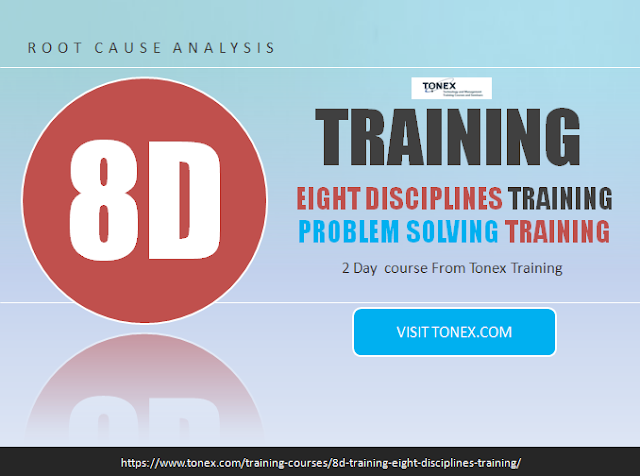8D Training covers the eight disciplines (8D) model used in advanced problem solving. 8D training covers the approach typically employed by quality engineers to identify, correct, and eliminate recurring problems as part of product and process improvement:
8D approach establishes a permanent corrective action based on statistical analysis of the problem
8D focuses on the origin of the problem by determining its root causes
It is comprised by eight stages, or disciplines
8D is a structured corrective action process; 8D stands for the Eight Disciplines of Problem Solving
Root Cause Analysis(RCA) is an integral part of the 8D process
8D Training Objectives:
Upon completion of the 8D Training Course, the attendees are able to:
Define what 8D is
Demonstrate and apply 8D Problem Solving Process
Illustrate 8D Problem Solving Process by a diagram
Understand Root Cause Analysis and 5 Why’s applied to 8D
Apply 8D Eight Disciplines to problem solving
Become familiar with the 8D steps
Become more proficient at Root Cause Analysis using 5 Why’s
Learn about 8D checklist and best practices
Learn about How 8D aligns with SAE AS13000: Problem Solving Requirements for Suppliers
8D Training Course Outlines:
Learn and work with the 8 disciplines in 8D Training. Upon completion of the 8D Training Course, the attendees will learn about:
Introduction to 8D
D0: prepare and Plan
D1: Use a team
D2: Define and describe the problem
D3: Develop interim containment plan
D4: Determine, identify, and verify root causes
D5: Choose and verify permanent corrections
D6: Implement and validate corrective actions
D7: Take preventive measures
D8: Congratulate your team
Hands-on Activities
Hands-on Activities:
8D Problem Solving
Aligned with SAE AS13000
Analysis of 8D Problem Solving requirements
8D problem solving process
AS13000 Templates are provided by TONEX
Request more information. Visit Tonex.com and learn more about 8d training eight disciplines training
8D Eight Disciplines Training

Comments
Post a Comment